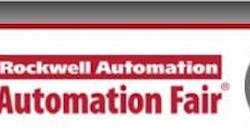While the craft beer industry continues to boom, many microbreweries are manually controlled and their manufacturing methods are a bit old fashioned.
Steve Grundy, a 15-year veteran of Rockwell Automation, saw an opportunity to advance the state of the microbrewery art when he joined Newlands Systems, a supplier of modular, scalable brewhouse control systems based in Abbotsford, BC, Canada. The 25-year-old company has installed some 600 systems worldwide.
"There is no lack of thirst for these new innovative brews," said Grundy, now vice president of sales for Newlands. "We saw a way to take the technology we are surrounded by here at Automation Fair and transform the way people think about brewing and the actual methods they use to drive better quality and consistency." Grundy was one of the speakers at the Global Machine & Equipment Builders (OEM) Forum this week at Automation Fair in Atlanta. The Forum focused on how smart machines and equipment are enabling Smart Manufacturing.
[sidebar id =1]"The craft brewing process is a sugar extraction process in its most basic form,” explained Grundy. "You take barley, wheat or rye and crack open the husk to expose the meat inside.” Hot water and an enzymatic reaction follow, converting the grains’ starches to soluble sugars that are then consumed by yeast to produce alcohol and carbon dioxide.
But of course it’s a bit more complicated than that. “Among the many steps and sub-processes are milling, mashing, wort separation, wort brewing, fermentation, maturation/storage, filtration and packaging—any of which can have a great effect on the quality of the final product,” Grundy said. “Depending on how the customer wants to brew, there will be various levels of automation.”
Scalability a challenge
The scalability of processes from small pilot systems to larger ones—while maintaining quality, repeatability and consistency—is a key challenge for microbrewers. Minimizing water and energy usage is another key objective. Increasingly, brewers are looking to automation as a way to meet these challenges.
“We need the customer to tell us what is important to them,” continued Grundy. “Instruments can be added to collect real-time data such as voltage, power, running time, temperatures, pressures, flow, turbidity and pH," he said. "And at a higher level, this data can be contextualized into productivity and quality measures such as grain efficiency and wort gravity. The information can then be used to optimize actions for a more efficient workflow and improve the process, closing the loop."
[sidebar id =2]
Newlands’ solution for brewhouse automation is a midrange process control architecture, typically with a CompactLogix control system.
It also uses Allen-Bradley 6181 integrated display computers with FactoryTalk View SE. The drives are PowerFlex 525 AC drives on an EtherNet/IP communication architecture. The company also leverages smart instruments connected via EtherNet/IP, where possible.
The controller stores the brew data into an array for historical display and includes a connection to FactoryTalk Historian. Using that along with FactoryTalk VantagePoint allows reporting based on batch ID and time and date of batch along with the actual vessels used.
"The brewhouse automation application software we’ve developed is flexible and can be used in a wide variety of configurations to provide better insights into your processes,” Gundy said. “The application lowers automation and overall project costs."
"In the end, whether it’s called The Connected Enterprise or the connected brewery, it's really about how we use information to bring value and advantage to our customers," said Grundy. "Multiple sensors on assets can produce a wealth of information that, if contextualized or viewed in the right way, can provide insight to both the operator and manufacturer from a design standpoint. Use technology to harness that information to become smarter and to operate more effectively. Brew better beer and more of it at a lower cost."
[sidebar id =3]




